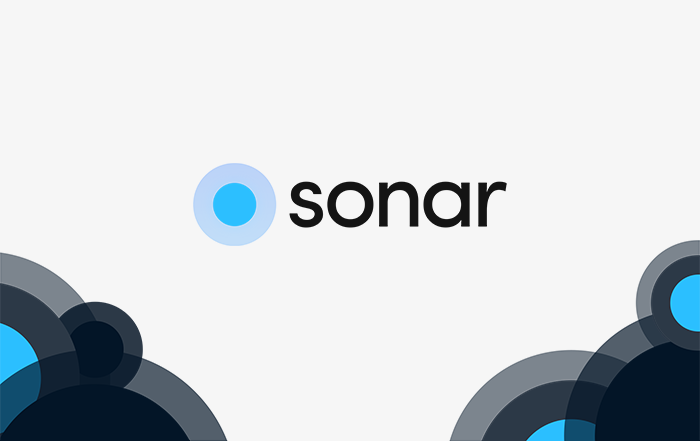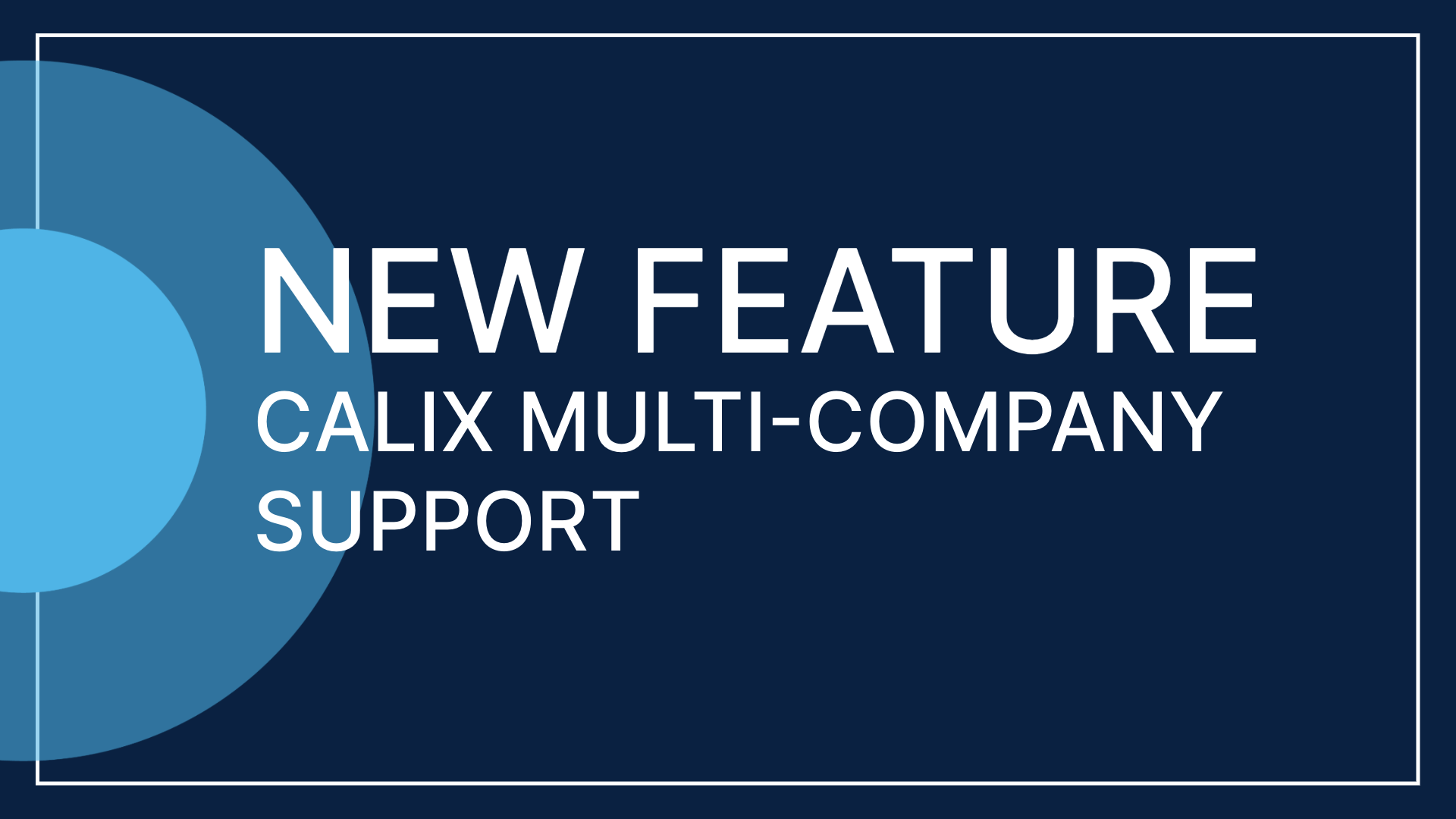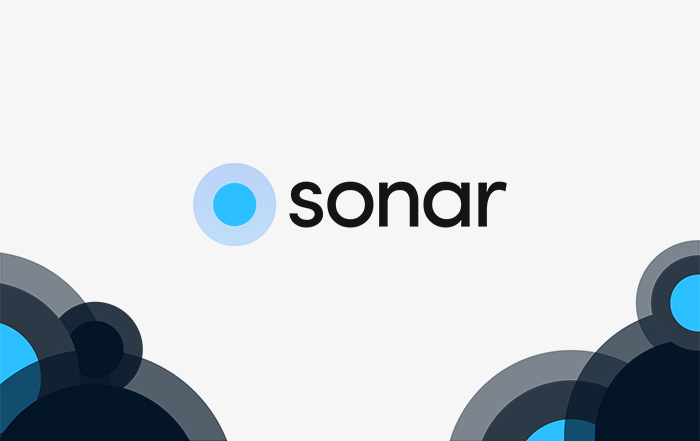4 min read
10 Ways to Streamline Your Support Process
In today’s highly competitive environment, with multiple companies having near identical offerings, it can be difficult to stand out from the...

There’s never been a greater need for software that can support multiple brands and multiple entities than there is in the current ISP market space. An increasing amount of competition and an unprecedented period of growth has resulted in companies acquiring others and merging entities, network space, and customer bases together under a single banner.
Whether you’re growing through acquisition or you need to separate your retail and commercial business for limited liability purposes, Sonar has been designed to enable the growth of your business. Every account, service plan, network segment, and invoice template can be linked to a specific organization or division within your Sonar instance, providing unparalleled control over branding, customer relationship management, and automation.
Multi-tenancy, in this context, means software that allows you and your organization to host multiple companies, or divisions, in the same instance. For Sonar, this means your various departments, distinct company entities, and divisions can all be added to the instance with a shared database but segmented permissions.
This has an advantage over traditional single-tenant software for several reasons:
Every organization is structured differently, which means Sonar has been designed to accommodate a variety of different structures and use cases. In order to better understand how multi-tenancy functions in Sonar, it’s important to establish how your instance will fit your organization.
The specifics of multi-tenancy in Sonar will vary based on:
In each scenario, Sonar will provide you with tools to simplify growth and scale your business to prepare for ongoing success.
With Sonar’s versatility, you’re able to benefit from the multi-tenancy structure, even without expanding your business to contain multiple organizations. When bringing your company into Sonar, you’ll be able to map certain sections of Sonar to specific departments within your organization.
This versatility means you’ll be able to onboard your employees faster, service your customers more efficiently, and grow your business with Sonar. With so many ways to strategically use multi-tenancy, each feature will be highlighted below:

Ticketing is one area where you’re afforded an incredible amount of flexibility when setting up your instance for multiple departments. Nearly every section of the ticketing interface can be customized, and the benefit from this segmentation means faster response times, better communication, and easier compartmentalization of responsibilities.
The first piece we’ll touch on for segmentation is ticket groups. Ticket Groups allow you to segment received tickets in Sonar to different groups of users within your organization while keeping these tickets accessible to all users. For example, you might use a Sales ticket group to filter tickets received inquiring about available services, and your sales team will be able to filter for tickets belonging to the sales group to action them.

The next way you can use multi-tenancy features in Sonar to enhance your organization’s ticketing is by implementing multiple inbound mailboxes. Whether you have multiple departments or multiple organizations, having a distinct inbound mailbox for each segmented group means it’s easier for your customers to reach you, and easier for your employees to access those tickets.

Ticket categories are another way you can benefit from multi-tenancy. Each created category can be applied to a ticket in order to further organize them. For example, if your organization operates across the country, then you could have a category for each region, such as a “Sales – AZ” and a “Sales – WY”.

One final key way ticketing with multi-tenancy features enhances your experience with ticketing is through Sonar’s implementation of Canned Replies. The preset responses can be generated ahead of time, and restricted to particular ticket groups. This means that your “Sales” team will have a unique set of responses from your “Support” team, and this separation reduces confusion when it comes to quickly answering tickets.


Roles in Sonar allow you to define permissions for all of your users, restricting access to unneeded portions of your instance while ensuring they all have full access to functions they require for their listed position. This also allows you to establish roles that may contain some overlap in order to reduce instances where there may be a single point of failure.
By creating all the roles you may need, you can easily separate and assign responsibilities to users across your organization. For example, you can have distinct roles for “Support Agents” with basic access to viewing accounts, and a more advanced role for “Support Leaders” that can make account changes and apply promotional services.

Building on role restrictions, you can control which users can apply credits to customer accounts, and of those users, how much can be applied. This control is done on a per-role basis when creating an adjustment service in Sonar.
Using this, you would be able to restrict front-line support or retention agents to a lower dollar amount over a certain period compared to the leaders or mentors in those same departments. While you may end up with a number of Adjustment services, the tighter controls will result in a better experience.

When you have multiple departments and multiple users working in the same instance, you may run into situations where changes occur that either need to be rolled back, or should never have occurred at all. In the past, especially when departments needed their own instances, changes could be difficult to track, and the databases could be separate and rarely sync to each other, resulting in changes going unnoticed until it was too late.
With Sonar, every modification is monitored, and every page view is recorded. Information about the date, time, and user that initiated the action will be accessible for as long as your instance remains active. With this extra measure of accountability, your data and customer information are protected from bad actors through visibility and detailed information when changes are made.
Choosing software that is designed from the ground up for multi-tenancy allows your organization to benefit from features designed to scale up to the enterprise level and apply it on a smaller scale. This means features that are tried and true for a very high-demand application will work for your organization at a lower level of demand. This can result in improved reliability over single-tenancy software that can require hardware improvements in order to scale with your growth or use cases.
Another benefit of multi-tenancy software that applies to this scenario is the ability to reduce the cost burden on your organization. By combining multiple departments together in a single instance, you’re reducing duplicate costs of software instances. Additionally, by sharing a database, Sonar reduces the actual workload of data migration, syncing, and duplication.
Trying to grow your business while managing your existing customer base can be a difficult proposition. In order to be prepared for your growth, it’s crucial that you choose services and software that can grow with your organization.
With Sonar, you not only get scalable one-stop software but one designed with multiple companies sharing multi-tenancy software in mind. There are several ways that Sonar’s flexibility and design methodology will benefit you and your organization as you prepare to grow.
These benefits will extend to various modules in Sonar, and affect each in different ways.

A key advantage of multi-tenancy software is the shared database across organizations. In Sonar, one way this materializes is through serviceable addresses. These are a collection of physical addresses that can be provided service on your network. The more serviceable addresses you add to your instance, the more locations you’ll know can be targeted when acquiring or deploying new services.
One way to identify new addresses is through integrations with other providers, such as TowerCoverage. This integration in Sonar will use your wireless internet network equipment to determine your current maximum service area and add potential customers to your instance as leads, with their address information ready to be verified and qualified.
The Inventory module in Sonar allows you to fully control the items being added to your instance. An important piece of this module is the inventory location functionality, which serves as a physical address to store your inventory items.

While a small business may only need a single inventory location, being prepared for expansion means understanding the tools you have available to you. As your organization expands, you’ll be able to smoothly add additional storage locations, simplify equipment deployment, and efficiently manage hardware requests.

With Sonar, contracts can be sent to customers in order to accept terms and conditions, acknowledge a work order, or agree to a service period. With contracts, you’re able to ensure customers know exactly what they’re signing up for in a completely customizable way.

As your customer base grows, your selection of contract templates will likely grow at a commensurate rate. Once you start acquiring other organizations or splitting your existing organization for limited liability reasons, each created contract template can be restricted to specific companies in your instance. By using this feature early on, you’ll familiarize yourself with the creation tools, the signing process, and the historical storage for contracts in your instance.

Billing Defaults let you control how your customer will receive their invoice when late fees are applied, and many other billing parameters. Each created billing default can be segmented by account type within your instance, allowing you to more effectively manage customer billing for companies that serve different market segments. Using billing defaults effectively means having different settings for different scenarios, as it’s rare that customers or businesses will share identical circumstances.
Familiarizing yourself with the billing defaults page will let you deploy newly acquired companies faster, either by converting acquired customers to your billing method immediately or by creating a new account type and serving customers with an existing billing default.

In Sonar, you can configure email domains in order to facilitate customer communication, invoice management, and general messaging. While email domains can’t be assigned directly to a company, each company should typically have its own domain added to Sonar.
Once you’ve added the email domain, it can be used for configured email messages as part of the email address, in addition to triggered emails, which use the content from the email messages.
Email domains are a useful tool for customer communication, not only for the email message module in Sonar but for ticketing as well.

With email domains configured in your instance, there are several ways to take advantage of features that build off of them. One of those features is ticketing, which provides a way for your customers to contact you for troubleshooting, sales support, or general inquiries. The ticketing module in Sonar is one of the most important, and it’s one of the many designed with multi-tenancy in mind.
With ticketing, you can prepare for growth by setting up ticket groups, ticket categories, and inbound mailboxes ahead of time. This preparation will help you get newly acquired customers up and running faster by providing them with an easy way to communicate with your team.

Ticket groups let you set a portion of your employees up as a group in Sonar, allowing tickets sent to the group to be filtered and organized, empowering you to resolve tickets more efficiently. Ticket categories allow you to group similar tickets together, such as a “sales inquiry” category and a “troubleshooting” category. Lastly, inbound mailboxes provide customers with different addresses when creating an email, and can be combined with groups and categories to automate some of your ticket filtering.

The customer portal allows your organization to set up a self-managed payment and account management system for your customers. Providing a customer portal has been shown to improve the customer experience, and a new customer portal can be configured for every company added to an instance. When you’re preparing to expand in the near future, knowing how to set up the customer portal can help make the transition easier for newly acquired customers, giving them a convenient location where they can make changes to their accounts, pay their bills, and view their current and historical data usage.
When you’re preparing to grow your business, your software needs to be ready to grow with you. With Sonar, you benefit not only from the features highlighted above, but also from the robust API, the customization options, and the ability to automate portions of your day-to-day business.
Because these features are designed with multiple simultaneous companies in mind, they’ll scale with you, no matter how quickly or how large you grow. Getting accustomed to everything Sonar offers ahead of time means you’re ready to hit the ground running as you leverage the various government incentives or acquire existing businesses.
The final way Sonar will benefit your organization as a result of the multi-tenancy design is in the scenario where you’ve already expanded your organization into a multi-company enterprise. Whether the expansion was through acquisition, or to serve different markets for limited liability reasons, Sonar is positioned to provide you just as much benefit as in any other scenario.
In order to deliver exceptional value and quality of service to your customers, your organization needs to be on the ball when it comes to communication, branding, customer management, and financial reporting.

When you have multiple organizations as part of your enterprise you need software that can keep track of them. With Sonar, you’re able to add each organization, department, or division as a new company. These companies are what will let you take full advantage of the multi-tenancy features of your instance, and each distinct entry provides its own customization options.

Branding, customer portal links, general invoice configuration, and name information are all determined at this stage.

Tracking customer accounts and serviceable addresses allows you to more easily know where your various organizations can deliver service, what service(s) can be delivered, and which market segment is currently underserved.
With Sonar, all that information is tracked within your instance across all companies you’ve added. This means historical serviceability information, historical customer information, and historical equipment information will be available to your team regardless of which organization or department they may belong to.
By sharing this information across your organization, you’ll be able to more quickly deploy cross-organizational customer changes or acquisitions, and be able to more efficiently onboard customers from additional acquisitions.

Invoice customization
When you operate multiple distinct organizations out of one instance, or in similar geographical areas, it’s important to ensure that your customers are able to easily distinguish between the different organizations.
For this reason, adding a company to Sonar allows you to customize the invoice by adding image branding, physical location information for your business, and the company’s name as a header. Invoices will be sent to customers based on the company they’re assigned to as they get activated in your instance.

Each invoice can also contain unique information in the form of attachments or messages, such as current promotions or general messaging regarding your business.
Contracts are an excellent way to set expectations for your organization, and to ensure the customer knows exactly what they’re receiving. The way Sonar manages contracts is by first requiring a completion of a contract template, and these templates can be restricted for use by specific companies. For instance, if you offer a 99% SLA to your enterprise customers exclusively, having a contract template assigned to your enterprise ISP means this agreement won’t be exposed to customers or your other companies, and avoids any cases where incorrect contracts are sent.

Once a contract template is filled out, the delivery and signature are both done electronically, with a signed copy of the contract available to your employees and to the customer on their account.

As with contracts, it’s important for customers to be able to easily distinguish information when it originates from your various organizations. Because most communication occurs through email, Sonar allows you to quickly define email message content and add branding content, such as images, directly to the email message. Each message will be set to originate from a pre-determined email address that will make use of your validated email domains for each organization.

This branding also exists internally, allowing you to configure canned replies in your instance and restrict their usage to specific ticket groups. This allows you to have quick replies created for your enterprise-serving organization in addition to your retail-serving organization, with no way for the canned messages to get mixed up.
In order to deliver internet to your customers, you need to define services in Sonar. Each service defines a price, billing frequency, applicable taxes, and allows you to restrict the service to specific companies in your instance.

By restricting services, you’re also able to restrict packages, which can be advantageous when offering promotional bundles only to certain segments of your business. Additionally, internet services restricted to companies will provide you more versatility when extracting your FCC Form 477 report from Sonar, allowing you to view customers by their assigned company, or as if they all belonged to your primary company.

Letting customers have access to a self-service portal typically results in an improved customer experience. Whether they use it to manage billing or to track their monthly usage, a customer portal provides them a measure of control over their account without needing to involve your support team.
Each company added to your instance can be configured with its own customer portal and customer portal URL. This allows you to ensure your customers are managing the correct account if they’ve subscribed with multiple companies, or reduce confusion when multiple customer portals are accessible.

By configuring the default billing parameters for each company in your instance will allow you Sonar instance to automate the billing process for customers as soon as they’re assigned to a company in your instance. Whether you’re using a shared billing default for each segment, or configuring a unique one for every company, the billing dates and automatic billing will be handled by Sonar.
Another benefit of billing default configuration is the option to maintain existing billing settings when you acquire a new business and its customer base.
Sonar offers incredible flexibility when it comes to the application of technician jobs and truck rolls, and it all starts with defining job types. Each job type can be fully customized and restricted to specific companies. You can automate status changes, service applications, and ticket creation through the job type based on its completion status.

From there, scheduling builds off of the job types – each job type will have its own schedule, available technicians, and repetition settings. Lastly, you have Schedule Blockers and Scheduled Time Off, which allows you to assign users specific timing to restrict them from being assigned a job. The entire process allows you to automate many portions of the dispatch process, and builds off of how Sonar handles companies and your settings.

The inventory module in Sonar allows your organization to manage and track the life cycle of all items being assigned to technicians, network sites, or customers. The manufacturers, models, and items are all accessible by every company added to your instance, and can be assigned or unassigned as needed.

Purchase Orders allow you to simplify your inventory request process – rather than requiring a separate application or a manual email to your vendor, Sonar allows you to add vendors and items to your instance. Each company in your organization can be added as a Purchase Group, allowing you to quickly look at historical data and be able to determine frequently purchased or over purchased items.

Sonar includes a built-in Business Intelligence reporting tool. With the flexibility of reporting available to you, you can narrow the focus of each report to focus on data specific to individual companies.
Whether using it to determine the financial performance of specific companies or how customers are using the services you’re delivering across all segments, the reporting dashboard will be one of the most powerful tools in your toolbox for continued growth with Sonar.
Because multi-tenancy provides the benefit of a shared database across your organization, it also demonstrates the importance of accurate data logging and retention.
With Sonar, every modification is monitored, and every page view is recorded. Information about the date, time, and user that initiated the action will be accessible for as long as your instance remains active. With this extra measure of accountability, your data and customer information are protected from bad actors through visibility and detailed information when changes are made.
When evaluating software for your multi-company organization, having software that’s prepared to scale is important. Not only does it reduce cost across your organization as you avoid multiple flat fees and subscription fees, but using the same software across your organization encourages internal growth.
As your employees become subject matter experts, they’re able to move between organizations and remain superstars with the software that runs your business. Additionally, having your entire organization in one database means reporting is more effective because more information is immediately accessible.

4 min read
In today’s highly competitive environment, with multiple companies having near identical offerings, it can be difficult to stand out from the...

April 3, 2025 We’re excited to announce that our Calix integration now fully supports multi-company provisioning, making it easier than ever...

1 min read
Sonar 0.4 is almost out, bringing multiple provisioning options to your network – check out the whole video series! The entire team has...